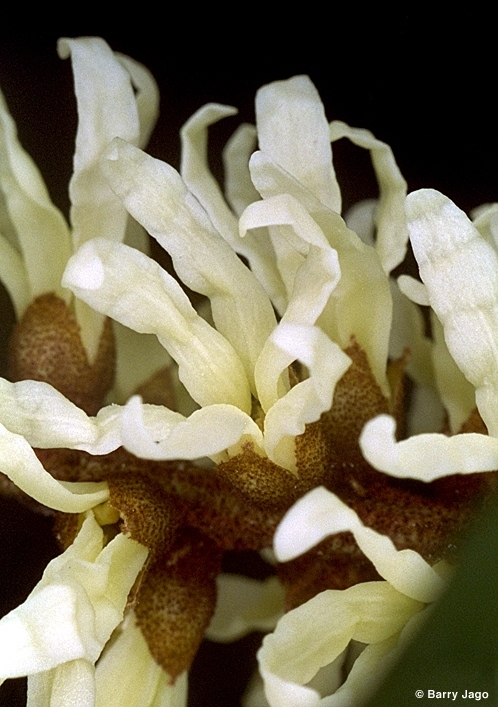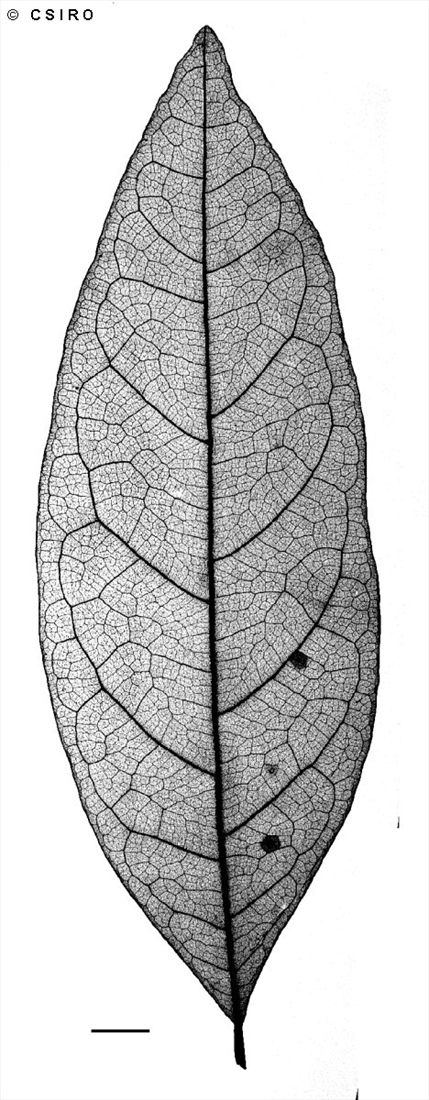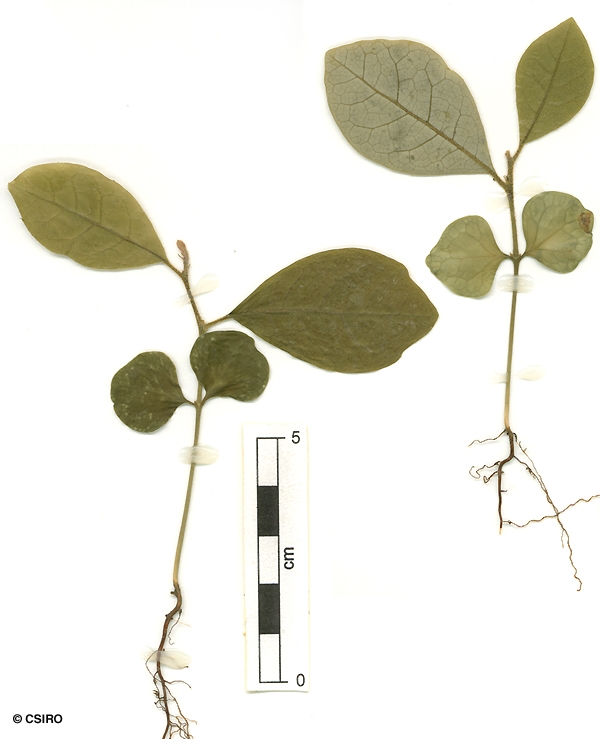Australian Tropical Rainforest Plants - Online edition
Neostrearia fleckeri L.S.Sm.







Smith, L.S. (1958) Proceedings of the Royal Society of Queensland 69: 46. Type: Qld, Cook District, Babinda Creek, Happy Valley, H. Flecker N.Q.N.C. No. 12775, May 1949.
A cream layer usually present beneath the subrhytidome layer.
Inflorescence about 10-20 cm long, rather sparse. Flowers sessile. Calyx ferruginous stellate hairy. Petals linear, about 15-18 x 2 mm, coiled in the bud. Ovary immersed in the calyx tube, apex of the ovary stellate lepidote.
Fruits sessile, half enclosed in the hypanthium, densely ferruginous stellate hairy or stellate lepidote. Seeds about 13 x 8 mm. Hilum white, large and conspicuous. Embryo very small, less than 1 mm long, cotyledons rounded at the apex.
Cotyledons +/- orbicular, about 13-16 x 16-19 mm, base cuneate or obtuse. At the tenth leaf stage: leaf blade obovate, apex acute, base cuneate, marginal teeth small and rather obscure; upper surface glabrous, undersurface slightly glaucous; a few small pale scales scattered on the underside of the leaf blade but visible only with a lens; oil dots small, numerous, visible with a lens; petiole, stem and terminal bud clothed in brown stellate scales. Seed germination time 20 days.





